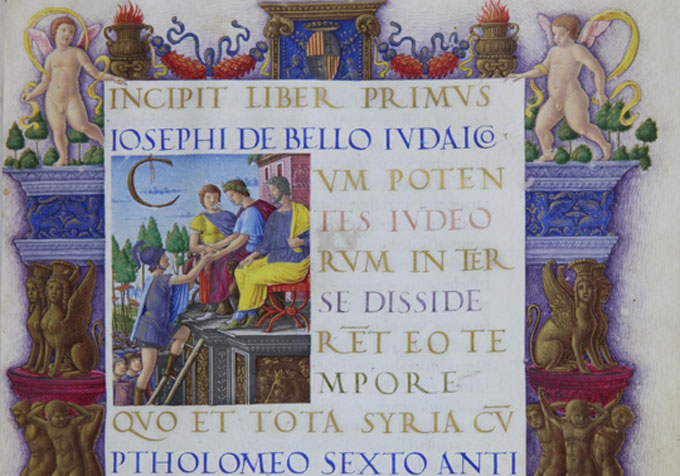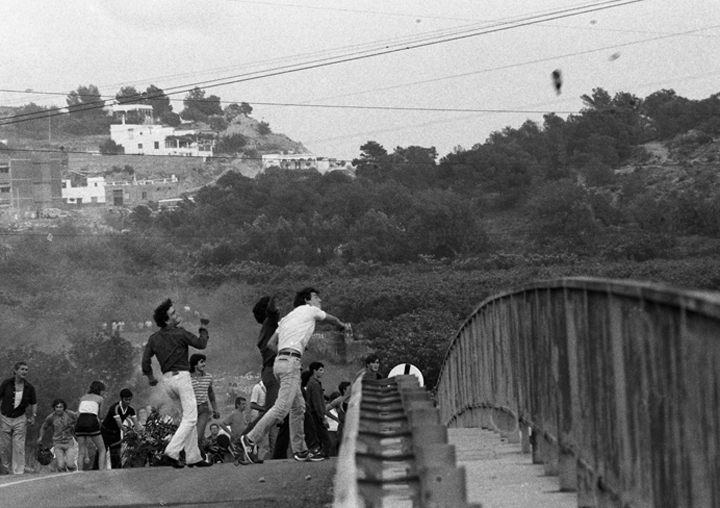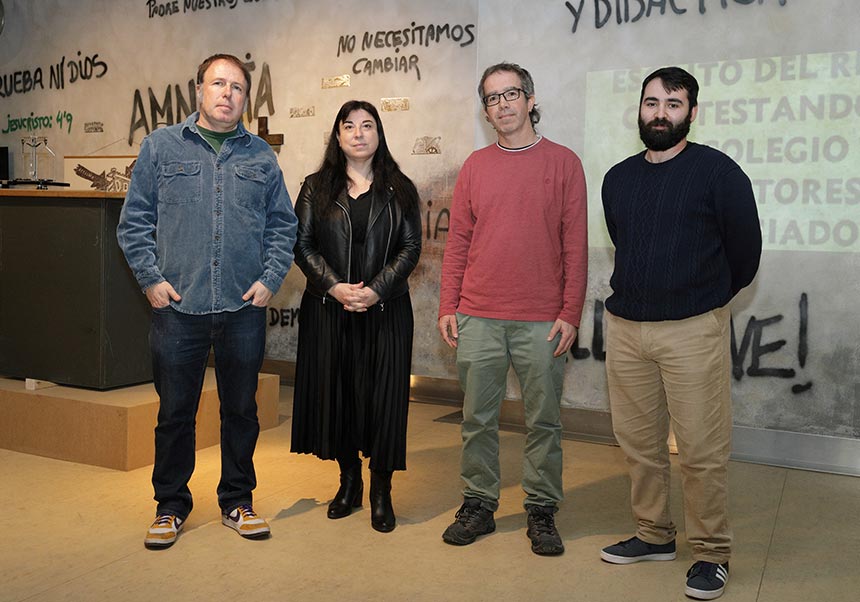The Universitat and the ‘Sociedad Bibliográfica Jerónima Galés’ promote the exhibition ‘Ferits pels llibres’
- Office of the Vice-Principal for Culture and Society
- April 15th, 2019

‘Ferits pels llibres. Fons de bibliòfils a la Universitat de València’ is the title of an exhibition which will be inaugurated on Tuesday, the 15th of April, in the Duque de Calabria Room of the Historic Library in ‘La Nau.’ Curated by Miguel C. Muñoz and Aránzazu Guerola, will be open until the 14 of July. The opening will be a 7 PM, tomorrow Tuesday in the Duque de Calabria Room.
This year, the 25 anniversary of the creation of the ‘Sociedad Bibliográfica Valenciana Jerónima Galés (SBVJG)’ is being celebrated as well as the 520 anniversary of the Universitat de València foundation. For this reason, an exhibition has been organised, which highlights the love for books and culture that both entities have expressed since their beginnings.
The exhibition is organised by the Office of the Vice-Principal for Culture and Sports of the Universitat de València, the ‘Sociedad Bibliográfica Valenciana Jerónima Galés’ and the Historic Library of the Universitat de València, and counts with the collaboration of the historical file of the Universitat.
The aim is to show a panoramic of the bibliophile trajectory and of the principal Valencian bibliophiles, since the Renaissance to the present day, suggestion a reflection about the meaning of love for books and how it is translated, sometimes, the love for them. But books tell their own story, showing the avatars (Inquisition, fire, floods, etc.) which have suffered throughout time, and how they have survived until today.
The collected pieces correspond with several models of bibliophile. The exhibition starts with the real aristocratic bibliophile, represented by the Duke of Calabria, for what the codex De bello Judaico (Roma, ca. 1475) by Flavio Josefo is shown.
In contrast to this love for books, several copies bowdlerised by the Inquisition, as por example the incunable Divina Commedia by Dante Alighieri (Vinegia: Petro Creomnese dito Veronese, 18th of November of 1491).
On the other hand, related works are shown, as for example the figure of the bibliophile that, with the donation or legacy of his collection, lays the foundations of a ‘new’ public library symbolised by Francisco Pérez Bayer. One of his handwritten works can be seen: Viaje a Andalucía y Portugal written between 1787 and 1802. After the disaster that the bombing to the Universitat brought about and the subsequent fire, a reconstruction of it was carried out by Valencian bibliophiles, as the Principal Vicente Blasco, the Marquis of Dos Aguas, Mariano Liñán, Vicente Hernández Máñez, Onofre Soler, José María Moles, etc. with important works such as lo Cançoner by Ausiàs March (between 1490 and 1600).
Other models are associated to the figures of bibliophiles-booksellers in the early times of liberalism as los Salvá; the bibliophiles with modest beginnings that knew how to take advantage of the book market situation after the expropriation period, represented by the caretaker José Gregorio Fuster, who bequeathed to the library Ethica ad Nicomachum, by Aristóteles (Barcinone: Nicolaus Spindeler, ca. 1481) of which we just know this copy; and the biliophily to the service of literacy represented by María Moliner, thus, it will be shown Informe de gestión de María Moliner guarded in the Historical file of the Universitat.
Closing the exhibition, we present the Valencian bibliographic societies, started by Gregorio Mayans and his Academia Valenciana de la Divina Sabiduría in the 18th century and which arrives to be the ‘Sociedad Bibliográfica Valenciana Jerónima Galés (SBVJG)’ founded in 1994. In the last glass cabinet, a selection of works edited by SBVJ is displayed, including the ‘Pasiones Bibliográficas’ magazine.
File in: Exposicions
















